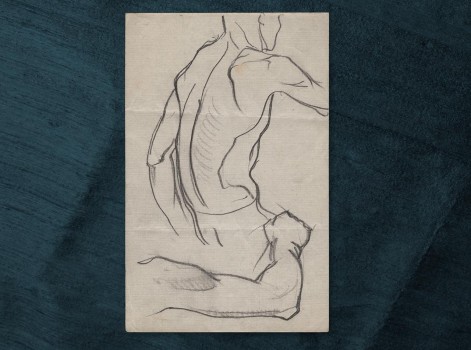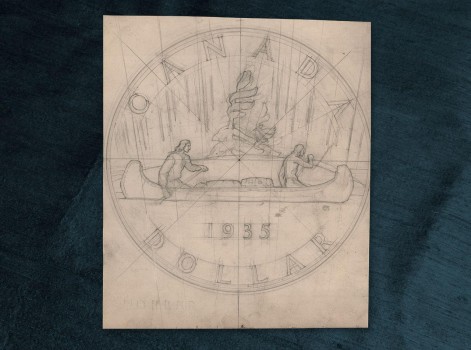Coin designs of Emanuel Hahn
An Emanuel Hahn First World War memorial design in Lindsay, Ontario. (Wikimedia Commons, Richard BH, Hamilton, ON)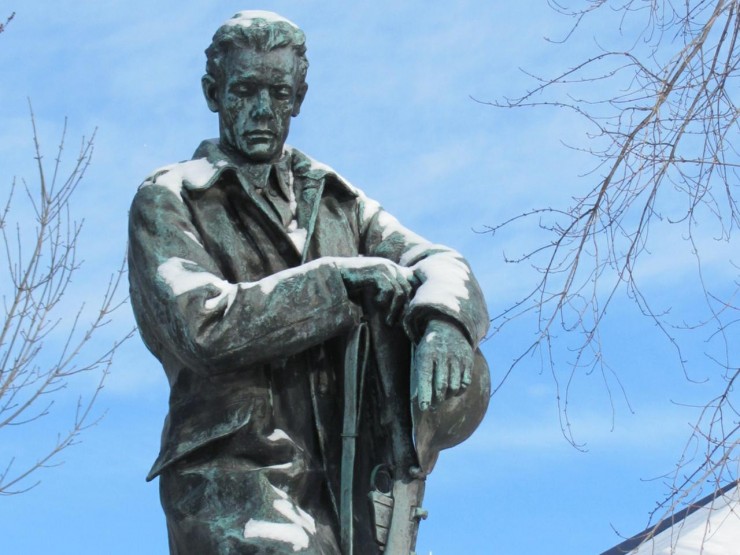
Emanuel Hahn was a celebrated Canadian sculptor whose work can be seen in the monuments of many Canadian cities. Born in Germany in 1881, Hahn immigrated to Canada with his family at the age of 7. Along with medals and a number of significant war memorials, Hahn designed some of Canada’s most distinctive and iconic coins. The voyageur silver dollar, the Bluenose dime, the caribou 25 cent piece and the 1939 silver dollar commemorating the Royal Visit of King George VI and Queen Elizabeth were all Hahn designs.
Pencil drawing by Emanuel Hahn sketching features proposed for the back of the 1935 silver dollar. 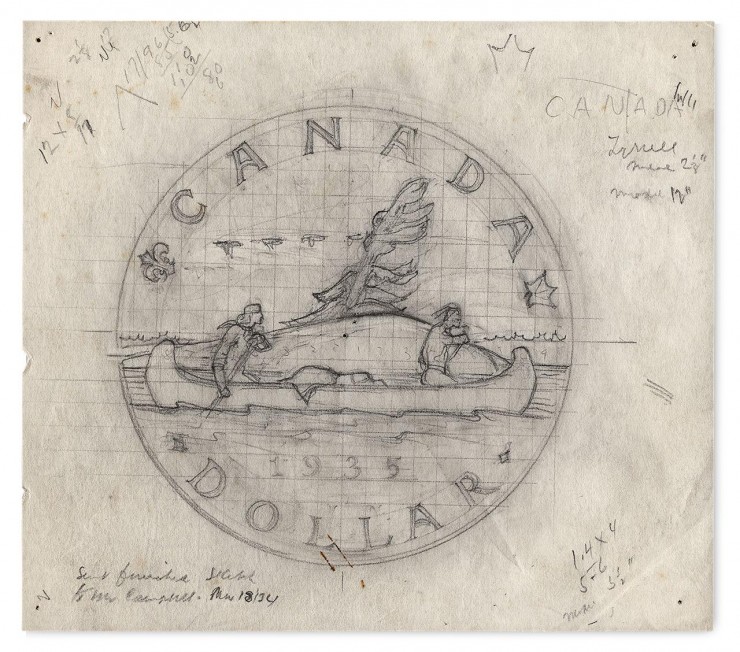
(NCC 1963.059.015.004)
In 1934 the Department of Finance invited Emanuel Hahn to submit a design for a silver dollar commemorating the silver jubilee of the reign of King George V. Hahn corresponded with the Royal Mint in London and the Royal Canadian Mint to gain insight into the process of minting a coin before submitting a drawing depicting a voyageur and a First Nations man paddling a canoe. To ensure accuracy, Hahn studied the designs of traditional canoes and the paintings of Frances Anne Hopkins. Hahn’s design was approved with only a few minor changes and was used as the standard pattern for the Canadian silver dollar until the introduction of the ‘Loonie’ in 1987.
Following the success of the voyageur silver dollar, Hahn was among several artists invited to submit designs for new Canadian coinage to be released in conjunction with the accession of King George VI, in 1937. Hahn produced no less than 16 sketches. His caribou (proposed for both the nickel and the quarter) and his Bluenose were both selected for the new coins. All of the designs put into circulation in 1937 are still to be found on Canada’s circulating coinage today. Hahn left an impressive mark on Canadian currency and all Canadians can be proud to have a ‘Hahn original’ in their pockets.
Reverse of 1935 silver dollar designed by Emanuel Hahn. 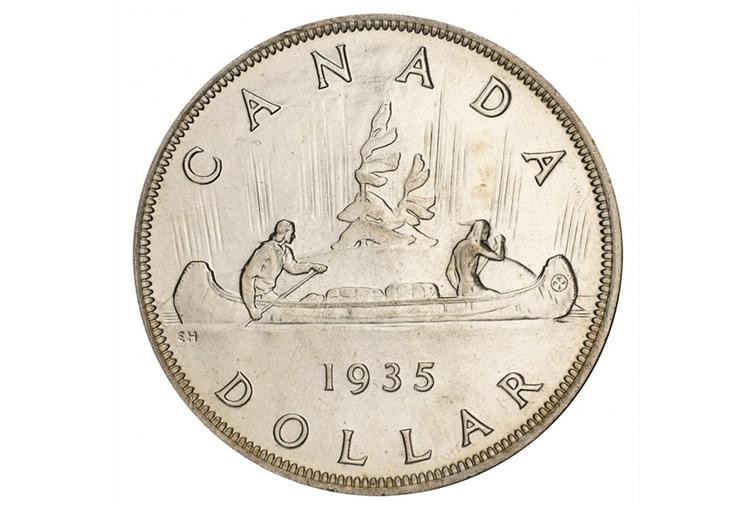
(NCC 1978.058.285b1)
Emanuel Hahn’s legacy of coins, drawings, plaster models and correspondence is preserved in the National Currency Collection of the Bank of Canada.
The Museum Blog
The Vertical Note That Almost Was
By: Graham Iddon
The printing firms’ design teams went to work and came back with a surprising result: vertical notes.
The Coming of the Toonie
The life expectancy of a two-dollar paper note was about a year. But coins can last for more than 10 years.
The Canadian Roots of the “Greenback”
By: Graham Iddon
Successfully counterfeiting a bank note in the mid-19th century required an engraver with reasonably high talent and very low ethics.
What’s Up Next for 2019?
By: Graham Iddon
Instead of bragging about our visitor statistics and the popularity our programming (both great!), we’ll talk about what’s coming up for early 2019.
Boer War Siege Money
By: Graham Iddon
As in any siege, Mafeking quickly began to run short of most things, not the least of which was cash.
Unpacking the Collection 11
By: David Bergeron
The size of the 1-cent coin was reduced to save on the cost of copper. At the same time, there were proposals to mint Canadian coins out of cheap and abundant nickel.
A Good Deal
By: David Bergeron
In Canada playing cards were used as form of emergency money at a time when the colony constantly suffered from a shortage gold and silver coins.
Unpacking the Collection 10
By: David Bergeron
During the first international assembly of the Ligo in 1946, a decision was made to introduce a common world currency with an internationally stable value.
Unpacking the Collection 9
By: Raewyn Passmore
Wars have been fought to control its trade and gifts of it have been made to ensure peace. It has even been used as currency.
